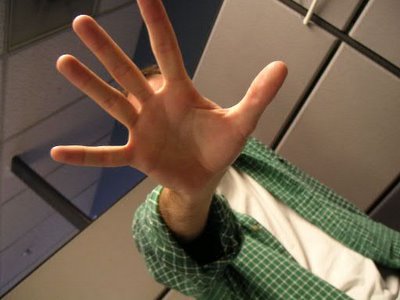Um... Yikes.
You're probably sick of me talking about stuff in the sky, but it's a long-standing fascination of mine, so you'll just have to cope. Or skip ahead.
The more stuff they look for out in the cold dark vastness beyond our paper-thin atmosphere, the more stuff they're finding. No secret there. And they're up to 927 known Potentially Hazardous Asteroids that they're tracking and which can come closer to Earth than 0.05 AU (Astronomical Units - the distance between Earth & the Sun), or roughly 20 times the distance between the Earth & Moon (LD). Which is admittedly still a long distance, except in the context of the vastness of the solar system.
In just the last 6 days, no fewer than 12 of these things have whizzed past the planet, all of them discovered only in the last month. Just yesterday, in fact, a new one, 2008CT1, was discovered... but only after it went sailing by, narrowly missing Earth by a mere 72,000 miles. That's less that a third of the distance to the Moon, people.
I find this alarming.
Now, I recognize that this particular close call was a relatively tiny object the size of a school bus or two, so it's understandable it wasn't seen sooner. And had it actually slammed into the planet, it likely would have exploded in the atmosphere in a fireball and littered a little patch of ocean with a few tiny fragments at worst. And I understand that the overall odds of anything big striking us are pretty miniscule. And there are lots of eyes and bits of software looking for these things.
But it's also been a long time since something hit us. Not that records are terribly good when it comes to this, since impact frequency is so low,  the planet is mostly unpopulated, and written history so short. Barringer Crater in AZ is roughly 50,000 years old and is the largest recent crater by far. Henbury and Kaali crater fields in Autralia and Estonia are both around 5,000 years old. The Wabar craters of Saudi Arabia are perhaps only 150 years old and were created by an explosion equivalent to the bomb that leveled Hiroshima. The Tunguska Event in 1908, on the other hand, left no crater but instead flattened 830 square miles of forest as an object perhaps 60 meters across detonated in the atmosphere 3-6 miles above the Siberian taiga.
the planet is mostly unpopulated, and written history so short. Barringer Crater in AZ is roughly 50,000 years old and is the largest recent crater by far. Henbury and Kaali crater fields in Autralia and Estonia are both around 5,000 years old. The Wabar craters of Saudi Arabia are perhaps only 150 years old and were created by an explosion equivalent to the bomb that leveled Hiroshima. The Tunguska Event in 1908, on the other hand, left no crater but instead flattened 830 square miles of forest as an object perhaps 60 meters across detonated in the atmosphere 3-6 miles above the Siberian taiga.
Guesses about how often these sorts of things occur vary widely. Which is why folks are scouting the skies, hoping for some advanced warning. It seems to me they've got some work to do yet.
Although, given that there's not much we could probably do about it were we to discover something coming at us at 50 miles per second, maybe it's better to not see the thing coming and remain in the dark...
Wednesday, February 06, 2008
Little Chicken
Posted by Zach at 8:23 PM
Subscribe to:
Post Comments (Atom)

3 Comments:
We could send Ben Affleck and Bruce Willis up in a space shuttle with a nuclear missile.
Not to intercept the the asteroids, mind you. Just to get them off our planet.
Joy, shame on you! Bruce Willis? I know you don't mean that.
I may have to reconsider Affleck, too, now that I've seen the thing with Jimmy Kimmel...
Post a Comment